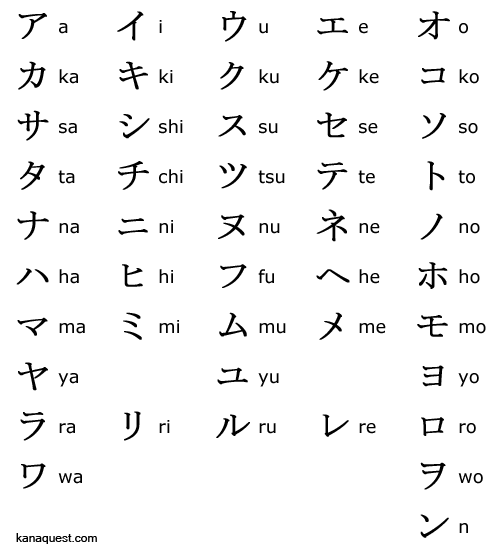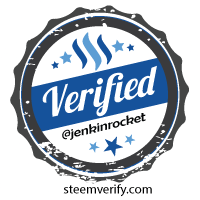Japanese 101 - Lesson 0

Welcome to the first in a series of basic lessons on Japanese. I'm by no means fluent in Japanese and I should make that clear, but I have been studying it on and off for a number of years.
First a little about the structure of the language.
Japanese is written using three main systems:
Hiragana

Hiragana is one of the three japanese writing syllabaries. It consists of about 46 different symbols, each one denoting a particle of sound in japanese. For example, in the Japanese word "ohayou" (Good morning), each syllable would be represented by hiragana symbols as follows: おはよう. Looking at the table above you can see that "o" is represented by "お", "ha" by "は", and so forth and so on.
Don't worry too much about how precisely each is pronounced. We'll go over that in the next lesson. For now we're just talking about the basics required to understand the upcoming lessons and talk about the resources you might want to consider acquiring (don't worry, they'll all be free).
Katakana

Katakana is syllabary similar to hiragana but used specifically for English or foreign words borrowed from other languages. Think of it as a way of italicizing or highlighting words in order to show that they are not natively japanese.
Kanji
These are symbols that denote all or part of a word. Unlike hiragana and katakana, these tend to embody ideas in a much shorter space than hiragana and katakana, though they do not add any more sounds. Think of hiragana and katakana as sounds in an alphabet, and kanji as whole words or sections of words. This analogy isn't exact, but it's plenty for a beginning lesson.
Kanji are originally borrowed from Chinese long ago, though note that they are not expressed in katakana because they are considered a fundamental part of Japanese and are used alongside hiragana and katakana to express ideas and sentences.
There's no kanji chart because they are completely inappropriate for a beginner's Japanese lessons. If this course goes well and people want it, we'll dive into kanji after.
Romaji
This isn't really one of the syllabaries. It's just a way to write Japanese words using latin letters. So おはよう (good morning) would be written ohayou, as I've written it above. Both are pronounced the same, so it's mainly just used for beginners who don't yet know basic hiragana.
Roadmap for these Lessons
These lessons will focus on a basic competency level for Japanese reading and speaking. The goal is to get you writing and speaking as soon as possible. The plan is to have a decent amount of focus on auditory learning and interaction. How far will we go? Well that's, in part, up to you. Based on interest, I'll post more lessons more often. However, I doubt there will be more than one a week, two at maximum, unless demand is absolutely ridiculous (this requires a bit of effort, even for someone who's been at it for a little while).
All of that being said, we'll start with basic hiragana compentency, dabble in katakana (not as important), move onto basic conversational skills, dabble a bit in grammar while focusing on auditory skills, and maybe a touch of kanji and some stronger reinforcement of katakana. The lessons will be varied to make them more interesting and digestible. In other words, I won't be focusing only on hiragana for three lessons. I'll move back and forth to keep interest and increase retention (an idea used by programs like Anki, recommended in the resources below - I may write a tutorial on it, later).
You might think: "dabble in grammar? Uh, isn't that kind of important?" I'd say that this is a major problem with online tutorials, actually. They go about teaching a language like they're trying to produce a grammarian in that language. I'm not trying to create Japanese grammarians, I just want to teach them to read and speak it.
Hunh?
Did you learn how to speak English by learning grammar? No. You were exposed to it, maybe taught some basic rules, and learned 'grammar' much later, after a near mastery of the language. But I digress.
This concludes lesson 0.
Homework
Just glance over the hiragana for a minute or so. Then go online and listen to a clip of Japanese conversation for another minute (without subtitles, preferred. Better yet, you can put it on in the background while you do something else). Don't worry about memorizing or understanding anything just yet. Believe it or not, every exposure to the language helps.
Resources
Anki: Anki is an intelligent flash card program that makes learning and permanently absorbing information much easier. The way it works: you download a pre-made deck or create you own, and the intelligent algorithm sets a 'clock' on each card. It continuously callibrates the card to attempt to show it to you just as you're about to forget it. This method has been shown to create higher levels of long term retention. In the coming lessons I'll post links to specific decks (some of my own creation, some not).
http://realkana.com/ - this site's been around for some time, and I used to use it all the time back in the day before I discovered Anki. Still really great at helping a person memorize kana if they haven't set up their Anki decks yet or if they just want to do a speed run of the kana to test for weaknesses.
https://www.hiraganaquiz.com/ - another good quiz site that's good for speed runs of testing for weaknesses.


Other Posts:
Board Game Reviews #3: Star Realms
Steemit's REAL Hidden Potential
The Law of Accelerating Returns: Why the Future is Brighter and Stranger Than You Think
Excellent lesson, thank you
Really good!
One suggestion, if you don't mind, when you use romaji, italicize it with
<em>ohayou</em>,_ohayou_, or*ohayou*for this result: ohayou. This makes it stand out from the English words and is grammatically proper. You see it a lot with Latin & Greek.Glad to see someone doing this project. I thought about it, but realized I couldn't dedicate my time to it. By the way, check out @steemitjapan, which just started.
I took a Japanese Language course in my university but I had forgotten most of it.